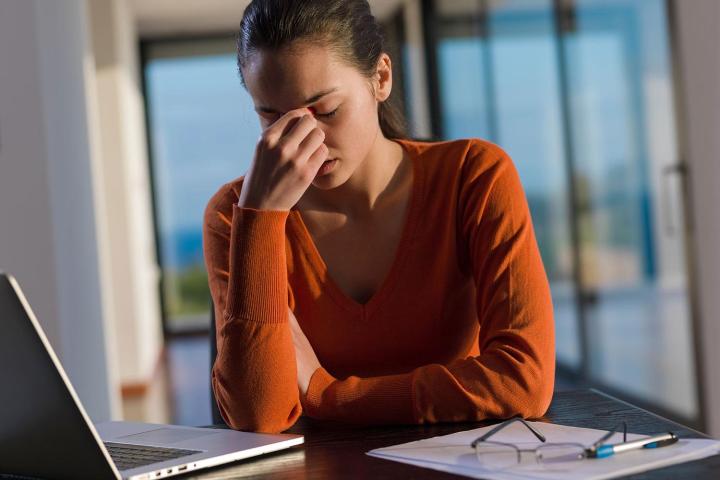
For many of us, it may feel as though most of our day is spent staring at one screen or another, and it could be taking a toll on our eyesight. More than 10,000 adults were surveyed for the report and it found that 90 percent of Americans use digital devices for at least two hours a day, 60 percent use them for five or more hours a day, and 70 percent use two or more devices at once. For those of you reading this on your phone in front of the TV, that will come as little surprise.
“Our eyes are not built to stare at digital screens all day, but the demands of our modern-day world frequently put us in front of a computer, working from our smartphones, and reading on our tablets for hours on end,” says optometrist Dr. Justin Bazan. “As a result, many of us are living with tired, sore and fatigued eyes, and even headaches — all symptoms of digital eye strain.”
The report paints a predictable picture of increasing smartphone usage overall, with 76 percent of respondents looking at their digital devices in the hour before sleep, 83 percent of those in their 20s using their smartphone as an alarm clock, and 96 percent of adults using digital devices to find recipes.
Perhaps unsurprisingly, the highest rates of digital eye strain are found in the younger generation who report the highest usage. A full 73 percent of adults under 30 report digital eye strain symptoms and 87 percent of people in their 20s use two or more devices at once.
Interestingly, more women than men report symptoms, possibly because they’re more likely to multitask and simultaneously use multiple devices. The report states that, on average, 75 percent of people who use two or more devices simultaneously report experiencing symptoms of digital eye strain compared to just 53 percent of people who use one device at a time.
While symptoms like blurred vision or eye fatigue should fade when eyes are rested, there are also concerns about the long-term impact of too much screen time. The report links blue light exposure to age-related macular degeneration and cataracts.
The Vision Council is trying to raise awareness after finding that a third of Americans who are aware of the dangers still don’t take steps to protect themselves. There is lens technology that reduces the glare and blocks blue light. We have tried out some of the protective eyewear options out there, such as Jins Meme or Gauss Glasses, and they’re certainly worth considering for anyone suffering from digital eye strain symptoms.
“When using technology, many think suffering with digital eye strain is a necessary evil, but it doesn’t have to be,” explains Bazan. “If you are experiencing vision issues while using digital devices, talk with your eye care provider to see if computer eyewear or another solution would be right for you.”
The Vision Council also suggests that we modify the way we use our devices. Tilting our heads down to view our phones, like you might do when you’re holding the phone under the table, puts added pressure and weight on your neck. It’s best to keep handheld devices at a comfortable distance and just below eye level. Most of us also lean forward to peer at our computer screens, when you should really try to maintain an arm’s length of distance.
It’s also worth bearing in mind that bright overhead lights or background lighting often causes our devices to automatically increase screen brightness, potentially causing more damage. On the other hand, working on a computer in a darkened room can force our eyes to keep readjusting. We should strive for a happy medium where room lighting matches device brightness.
The 20-20-20 rule can help make a difference. Every 20 minutes, take a 20-second break and look at something 20 feet away. If you’re still suffering symptoms of digital eye strain it may be time to schedule an eye exam. You can find the full report at The Vision Council website.
